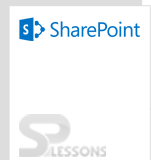Instead of Search Scopes, SharePoint 2013 Search uses Results Sources to define a subset of searchable content. Result Sources use a query transform property to define the items that are included in the result source.
SharePoint 2013 has done away with search scopes and replaced them with result sources. Search scopes used to allow users to refine search results returned from an index, so that you could scope the results for a particular scenario.
For example, a search scope might restrict search results of a particular subsite and below in a site collection, so that users who use this scope in their search see only results for a narrow set of content. Result sources provide a similar function to search scopes, but with greater control over the iltering. Result Sources are actually the combination of Federated Search and Search Scopes. In SharePoint 2013 you can create a new Result Source and specify the “Protocol” (to search Local SharePoint or a Remote SharePoint farm and so on) and can specify the “Query Transformation”.
The query builder understands both Keyword Query Language (KQL) and FAST Query Language (FQL), which are used to define result source criteria. KQL and FQL provide superior query syntax to that of CAML (Collaborative Application Markup Language), used in earlier versions of SharePoint. SharePoint 2013 inherits FQL from that of the FAST ESP, which Microsoft included in the SharePoint 2013 platform.
Query rules are a new feature of SharePoint 2013 that allows users to tailor search results in a flexible manner. Query
rules consist of conditions and actions that SharePoint applies when a search query meets a condition.



